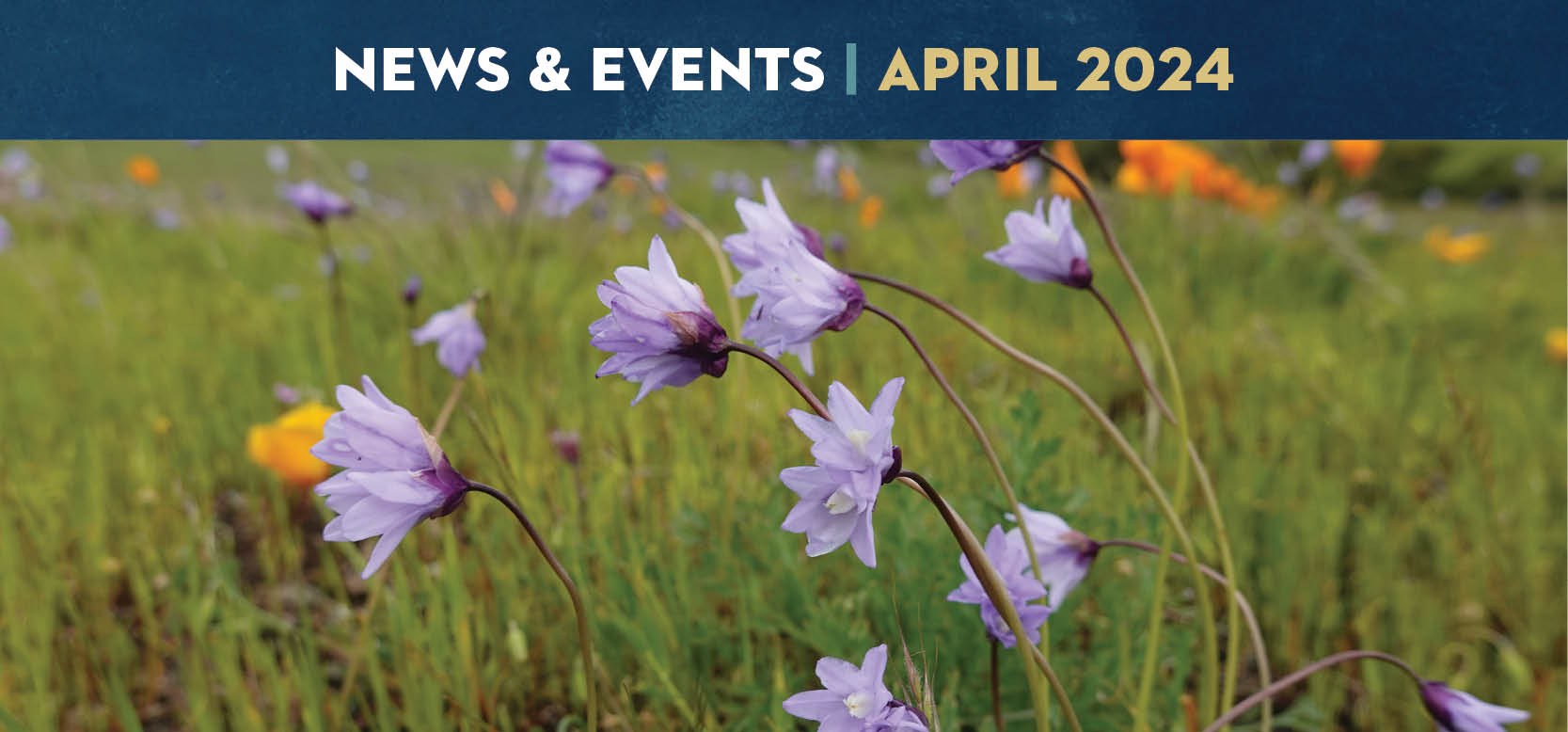
Our interconnected natural web
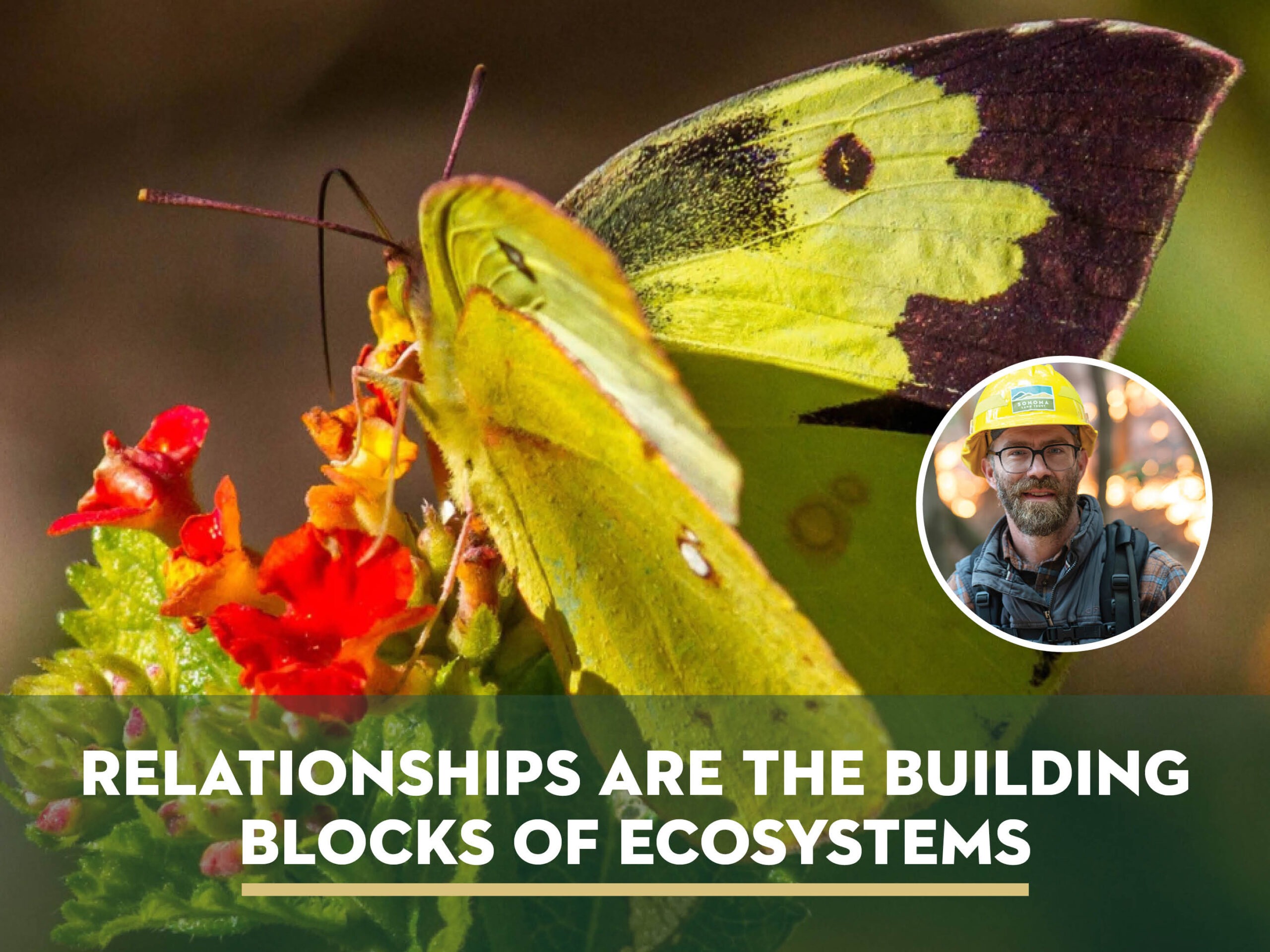
We often think of individual species as the building blocks of ecosystems. However, some species require another species to exist, or can only thrive in the presence of a complementary plant, animal, or fungus. Species have evolved together to create healthy beneficial relationships, with organisms supporting each other’s function and becoming stronger together. When we understand the intricacies of these cooperative interactions, we are better poised to provide the necessary protections to ensure Sonoma County’s incredible biodiversity continues to flourish. Taking a walk this spring, you may spot some of these relationships on display.
Semi-parasitic plants
Plants within the group Castilleja, including Painted-cup paintbrush (Castilleja coccinea), Purple owl’s clover (Castilleja exserta), and Warrior’s Plume (Pedicularis densiflora), are “hemiparasitic”, or partially parasitic. Although they have green leaves and photosynthesize some of their energy, they have a shallow root system and require a host plant to draw nutrients from. Although it may seem like a “parasite” could hurt the ecosystem, research has shown that the presence of hemiparasites leads to greater biodiversity as they mediate competition, allowing less common and less competitive plants to co-exist.
It is a great time to see Warrior’s Plume at the new Chanslor Ranch Regional Park, Sugarloaf, and Trione Annadel State Parks, to name a few. The perennial herb has long-lasting blooms and grows in association with Manzanita in our area. Not only are the bright petals of Warrior’s Plume eye-catching, but the plant also has medicinal attributes, used to treat anxiety, nerve pain, muscle tension, and insomnia in the Western herbal tradition.
Making a flower home
Butterflies and flowers are a classic pairing, and some butterflies require a specific host flower to reproduce – monarchs are a well-known example, requiring native milkweed as a larval host. As Californians, you may be familiar with another association; the California Dogface butterfly (Zerene eurydice), our state insect, which relies almost exclusively on a plant called California false indigo (Amorpha californica) as a place to lay eggs and rear larvae. False indigo mostly grows in Southern California, but we are lucky to have a northern population of “Napa” false indigo in our region, making it possible to catch a glimpse of a California native found nowhere else in the world.
Dogface butterflies have been spotted on protected lands and in cities throughout Sonoma County, mostly nectaring on purple-flowered native plants. These butterflies are strong fliers and FAST, so keep your eyes peeled on these spring days over 60° – bring your binoculars or long camera lens to help spot them. Sonoma Land Trust is working to improve the false indigo habitat, a plant that needs fire to germinate its seeds – through our stewardship efforts to restore good fire to the land.
When plants enlist ants
Some plants have evolved seeds that entice other species to spread them, Classically, we think of birds or bears eating fruits and spreading the seeds. But by one estimate, at least 11,000 lineages have figured out how to harness the power of ants, one of the most prevalent and productive animals on the planet.
Plants in the trillium and violet groups are local examples of this association using carnivorous ants to spread their seeds. The plants entice ants with a seed that includes a specialized, fat-rich sac on the coating (elaiosomes), to attract certain ants. The ants collect the seeds and disperse them by bringing them back to their nests. Of course, there are “cheaters” in this system, ants that eat the coating without dispersing the seeds, or ants that eat the seeds in addition to the coating, but the Aphaenogaster genus of ant is well known as a hero to Trilliums across the country. You can see our local Pacific Trillium (Trillium ovatum) and Giant White Wakerobin (Trillium albidum) thriving, thanks to the assistance of ants, at Mark West Creek Regional Park, Sonoma Coast State Park, and Sugarloaf Ridge State Park.
Violets are also known to be ant mutualists and many butterfly species rely on violets as larval hosts, like the endangered Callippe silverspot butterfly (Speyeria callippe callippe), whose larval host is the California golden violet (Viola pedunculata). The violet and the silverspot butterfly are found in abundance on the sloping southern hills of the Sears Point Ranch Preserve and Tolay Lake Regional Park.
These are just a few examples of species associations – we could have written about buzz pollination by bumblebees, or how lichens are three organisms living together – but the critical takeaway is that we are much more deeply intertwined than we know. The loss of one, two, or ten members of a inter-species community is bound to lead to change.
Sonoma Land Trust’s mission is to protect biodiversity through land conservation and restoration. Places like Tolay Lake, Sears Point Ranch, and Sonoma Mountain Vernal Pools are living laboratories for research and discovery to take place so that we may learn more about and protect the fascinating natural web upon which all life depends.
Follow Chris’ finding on his iNaturalist account: https://www.inaturalist.org/people/ChrisMT
Wander through the wildflowers!
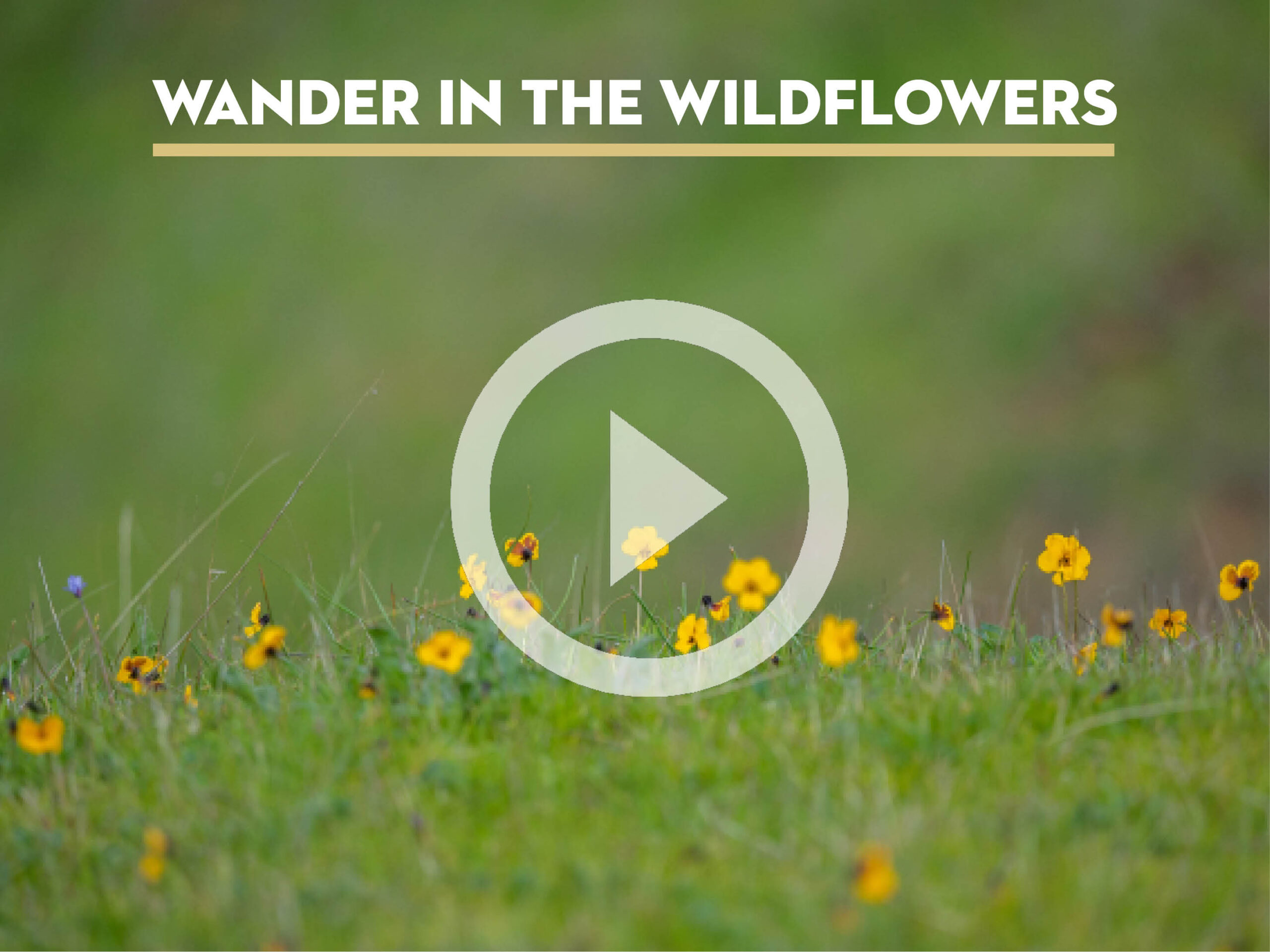
Lucky for us, we don’t have to travel far to wander through the wildflowers. Learn more at sonomalandtrust.org/wildflowerguide
In nature, relationships are essential
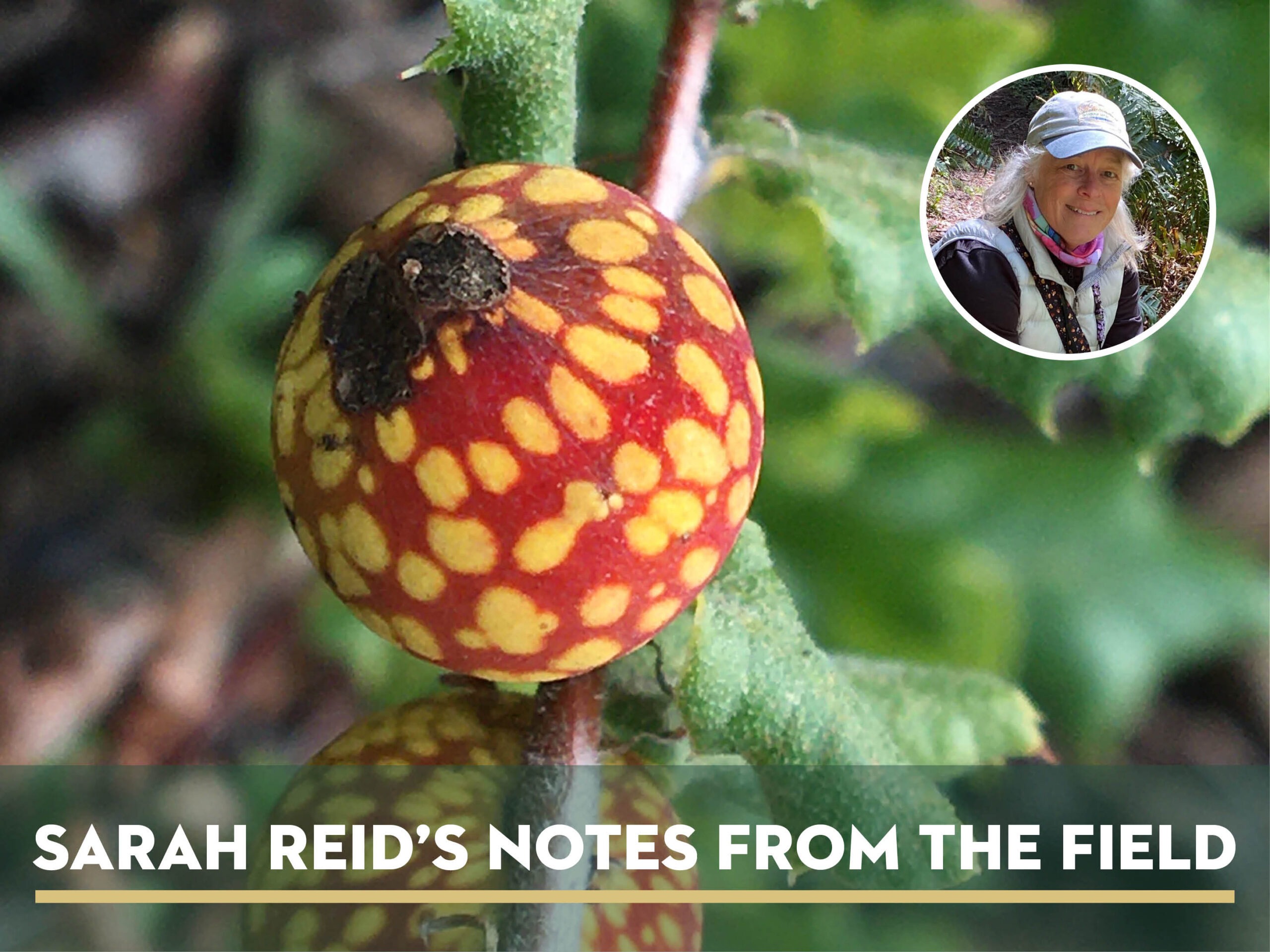
Relationships are essential to surviving in nature. Whether an animal finding a mate to procreate, or a plant pushing up toward the sunlight, dynamic relationships are all around us if we choose to observe them.
Plugging into a network has benefits
Have you heard about the connections within the Wood-Wide Web? Mycorrhizae – underground fungal networks – create an internet for Coast redwood (Sequoia sempervirens) to transmit information between family members (clones) or nearby trees, share nutrients when a tree is weak, and warn each other when a threat is present. For 400 million years, mycorrhizae have provided the means for friendly conversation between plants, helping them to know each other, respect each other’s boundaries, and prove they can be counted on in times of need. While the mycorrhizae are the communication source, the trees supply nutrients such as sugar and fats back to the fungal network. Host plants find great benefit in this exchange and have been documented as sharing as much as 20% of their own nutrients with fungal partners.
Nature is patient
It can be difficult to reconcile the concept of beneficial fire when our community has experienced so much loss as a result of wildfire. However, I have noticed something inspiring that helps underscore the benefits of prescribed fire as a tool in improving the health of our landscapes. I recently discovered a Scarlet fritillary (Fritillaria recurva) in a location where I have never seen one before – it was hard to miss this one stalk valiantly blooming bright red in a forest area that burned in the 2020 Glass Fire. Fires destruction reshaped this landscape, and where once before this was an area shaded by a Douglas fir canopy, sunlight now beams down onto the ground, warming and encouraging a small bulb that was once too cold and in too much darkness to grow. How long was it lying in wait for the right conditions to thrive?
Hosting a new family of wasps
A visually striking relationship in nature can often be observed on our native oak trees, which are hosts to gall wasps. The adult wasp lays eggs on part of the oak, such as a twig, bud, or leaf, and a small growth called a gall forms once the larva begins to feed. Some gall wasps only use certain species of oaks as hosts for their larvae, while others are not as discerning. This colorful example is a Spotted Beaked Oak Twig Gall Wasp (Burnettwelia plumbella) that lives only on the Leather Oak (Quercus durata), a species that specifically evolved to survive in a serpentine habitat with low-growing branches, thick, prickly leaves to ward off browsers, and scaly bark to withstand environmental pressures.
Can one species nurse another back to health?
Contrary to popular belief, Oak mistletoe (Phoradendron leucarpum) which can appear to be harmful can actually be beneficial! It can support an amazing array of life, from habitat to sustenance. The clusters of mistletoe provide nesting space and cover for small mammals and birds. The leaves and blossoms attract insects that feed birds such as Western bluebirds and Bushtits. The berries feed mammals (even porcupines!) and birds such as Chickadees and Robins. In addition, this author has observed a completely burned Coast Live Oak (Quercus agrifolia) tree recover from the 2017 Nun’s Fire, sprouting back only where the mistletoe grew on the tree! Six years later, you can’t tell the tree had burned at all. Did the mistletoe provide insulation for parts of the branches?
The better we understand the relationships and connections in nature, the better we can understand our own role as land stewards.
Follow Sarah’s findings on her iNaturalist account https://www.inaturalist.org/people/wildmare64
A Force for Nature: Steven Hightower
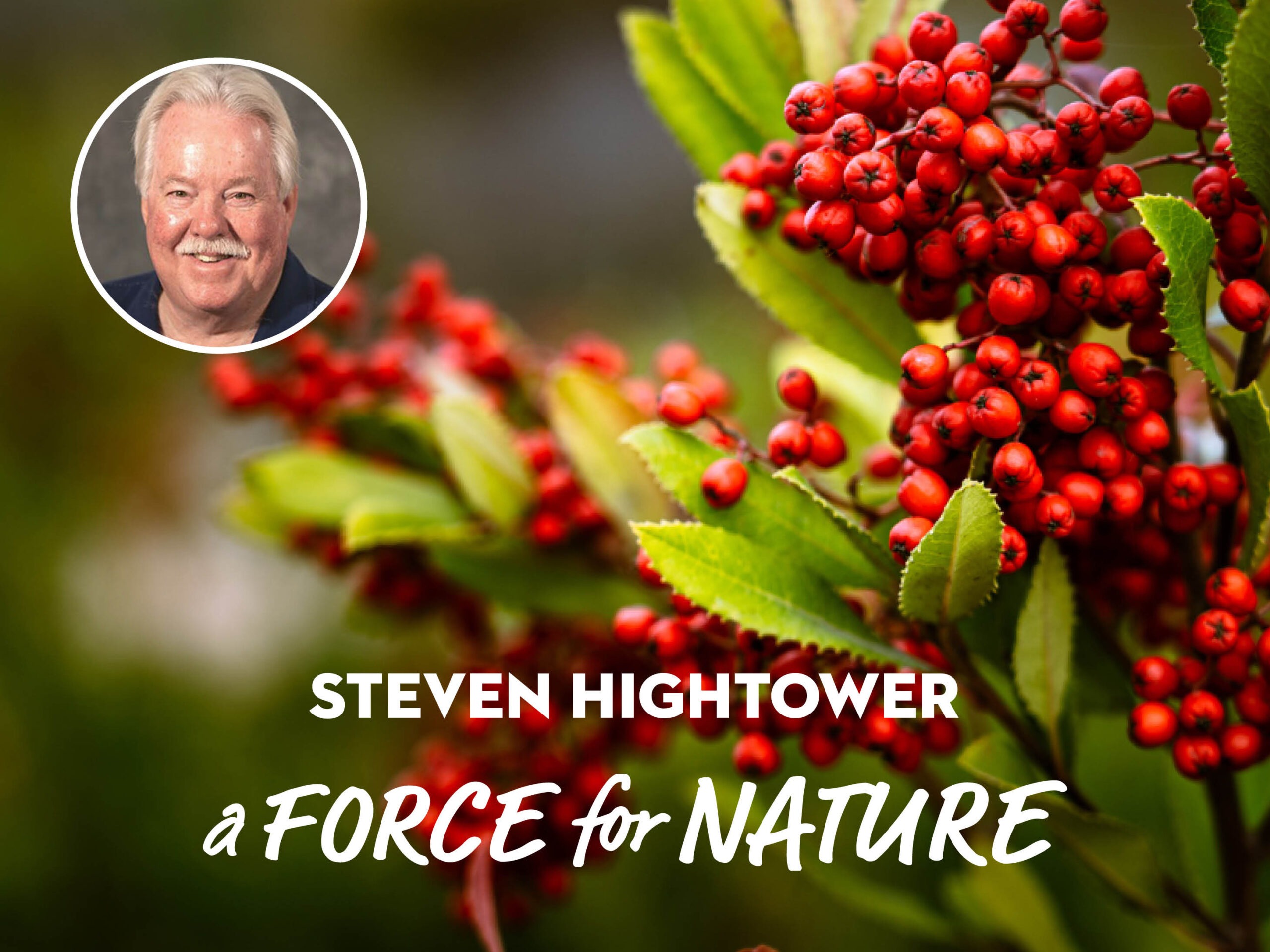
Steven Hightower, board member and Master Gardener shares some top tips for your garden this spring, fun facts, and why he supports Sonoma Land Trust.
- I joined the Sonoma County Master Gardeners in 2006 and created the first Sonoma County Master Gardeners website!
- Two of my favorite plant species are Toyon (California Holly) and Manzanitas (hard to pick just one!) I have an Arctostaphylos manzanita in my front yard.
- My top gardening tip for newbies is to learn how to do drip irrigation. Here’s an article I wrote to get you started.
- I support Sonoma Land Trust as a donor and Legacy League member because protecting the beautiful, wild landscapes, waterways, wildlife habitat, and vistas of Sonoma County is one of the most important causes there are, and Sonoma Land Trust is the regional leader in those efforts.
Welcoming new staff!
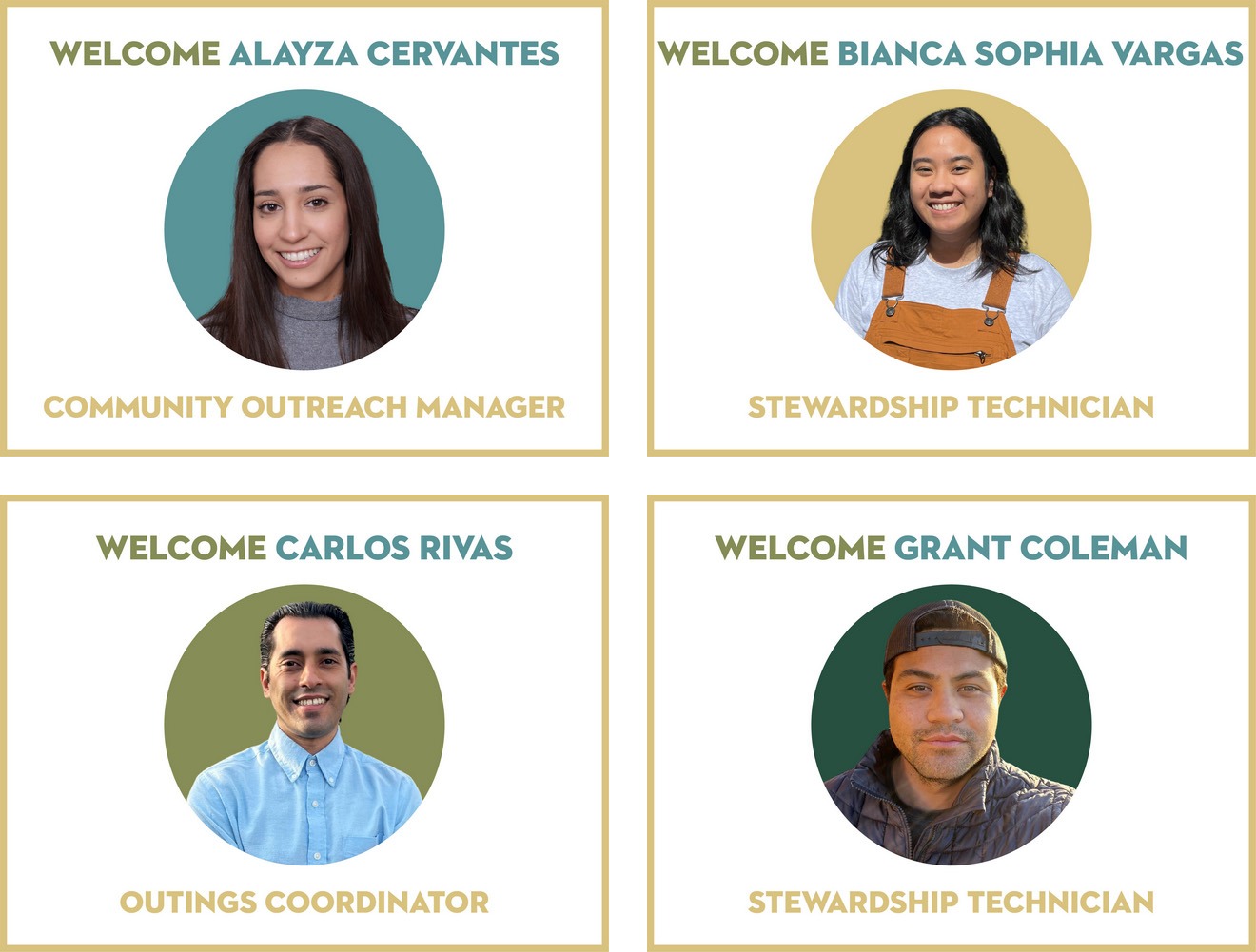
Bianca Sophia Vargas, Stewardship Technician: Bianca brings a passion for environmental justice and fire ecology to their role on the stewardship team. They recently graduated from the University of Minnesota with a BS in forest and natural resource management, and as a student pursued research at the university’s silviculture lab, collecting and interpreting field data. Bianca has held leadership positions at several conservation and forestry-focused nonprofits, including Conservation Corps Minnesota & Iowa and The Great Basin Institute, and in their free time, they enjoy traveling and identifying trees!
Grant Coleman, Stewardship Technician: Grant brings extensive experience in natural resource management to the Land Trust, having worked with nonprofits and state agencies throughout California and Nevada on ecosystem restoration, trail construction, wildlife monitoring, invasive species management, and forest health planning. He is passionate about restoring lands impacted by wildfire and creating more fire-resilient wildlands. In his free time, you can find Grant exploring trails on foot or bike, photographing nature, or checking out a local brewery.
Carlos Rivas, Outings Coordinator: Carlos brings a passion for social change and extensive experience in youth outdoor education to his role on the Community Engagement team. He believes nature is an essential part of all of us and aims to highlight the importance of conservation as he guides others into nature. Carlos came to the US at a very young age from Zamora, Michoacán, Mexico, and grew up in Santa Rosa, later earning a BA in Chicano and Latino Studies and AS degrees in Mathematics and Engineering. Before joining SLT, Carlos worked or volunteered with Landpaths, North Bay Jobs for Justice, and the North Bay Organizing Project. He is a new father and enjoys spending time outdoors with his son.
Alayza Cervantes, Community Outreach Manager: Alayza joins Sonoma Land Trust with extensive experience developing and implementing a variety of programmatic initiatives focused on outreach, civic engagement, and collaboration with partners, volunteers, and community members. Alayza holds dual bachelor’s degrees in psychology and Chicanx studies from UC Davis and is a native of Sonoma County. She believes that access to nature and open spaces is vital for every community and she is excited to find new opportunities for community members to work with Sonoma Land Trust.
Events

Wednesday, April 17, 5pm
How are environmental policies evolving to address the disproportionate impact of climate change on communities of color in Sonoma County? On April 17, join our friends at Los Cien Sonoma County for a discussion with local experts in urban planning, community development, and conservation science to explore how initiatives like 30×30 California are centering marginalized communities in policy development, and learn how you can participate in a more equitable future.
We hope to see you there! Tickets are available now.
Free Language of the Land webinars
Conserving Mediterranean Habitat in Chile

Mediterranean ecosystems are found in only five places on earth: California, Europe, Chile, Australia, and South Africa. These habitats have fertile soils, temperate climates, beautiful landscapes and high biological diversity, making them both global biodiversity hotspots and gravely threatened. Learn more about private conservation efforts in Chile to protect its Mediterranean habitats with the Fundación Tierra Austral, exploring their achievements and challenges.
California Against the Sea

Watch On-Demand: California Against the Sea
Explore the future of the California coast with Rosanna Xia, an environmental reporter for the Los Angeles Times. In this presentation, she shares insights from her award-winning reporting on sea level rise and introduces her new book, California Against the Sea which explores how the decisions we make today will determine where we go tomorrow: headlong into natural disaster, or toward an equitable refashioning of coastal stewardship. .
Join us in nature
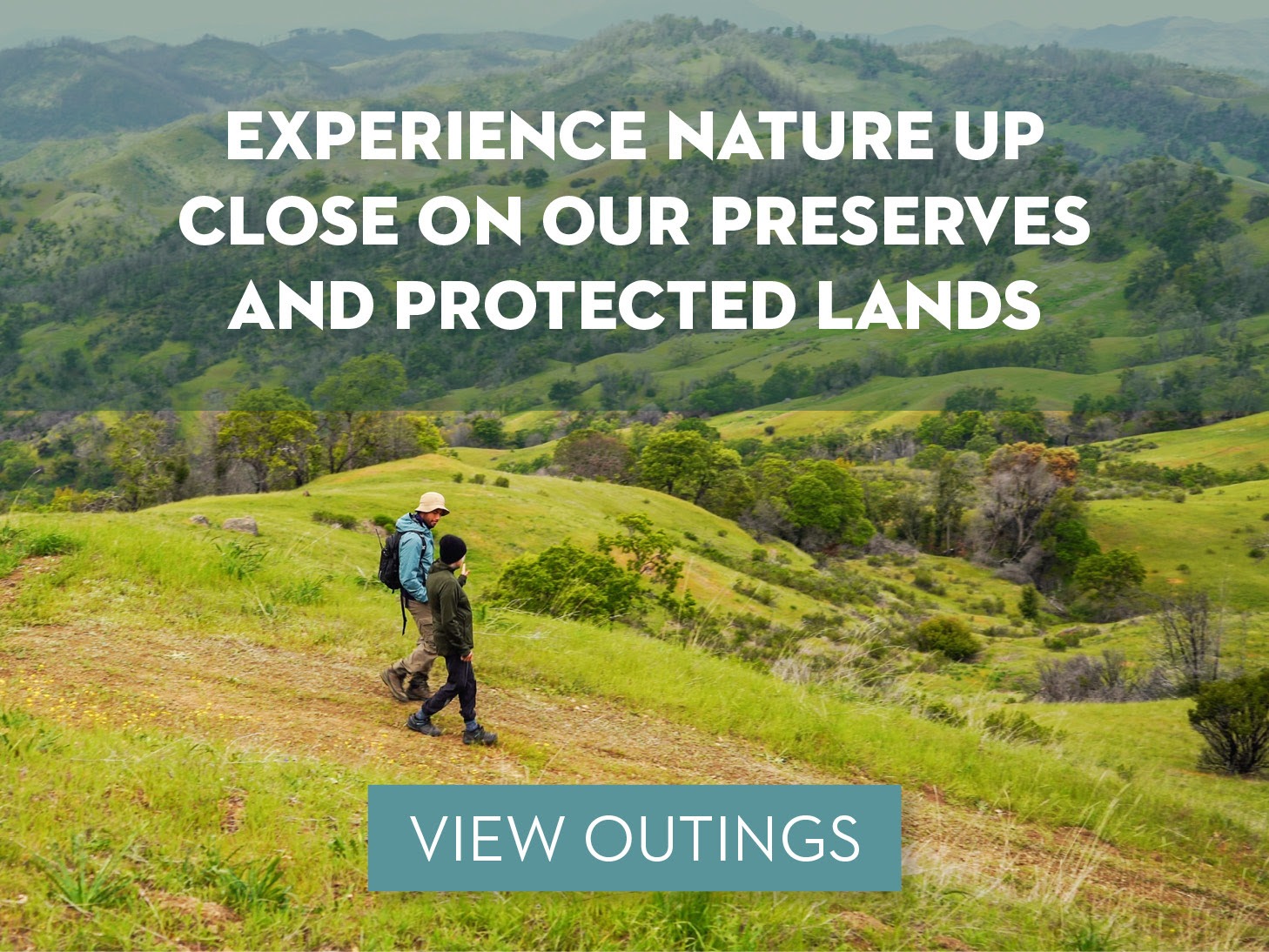
Join us out in nature this month! We’ll enjoy magnificent wildflower blooms throughout the county, explore the Sonoma Mountain Vernal Pools property, and more. Visit our outings page to register.
Many of these hikes are in partnership with Sonoma County Ag + Open Space.
Recommendation
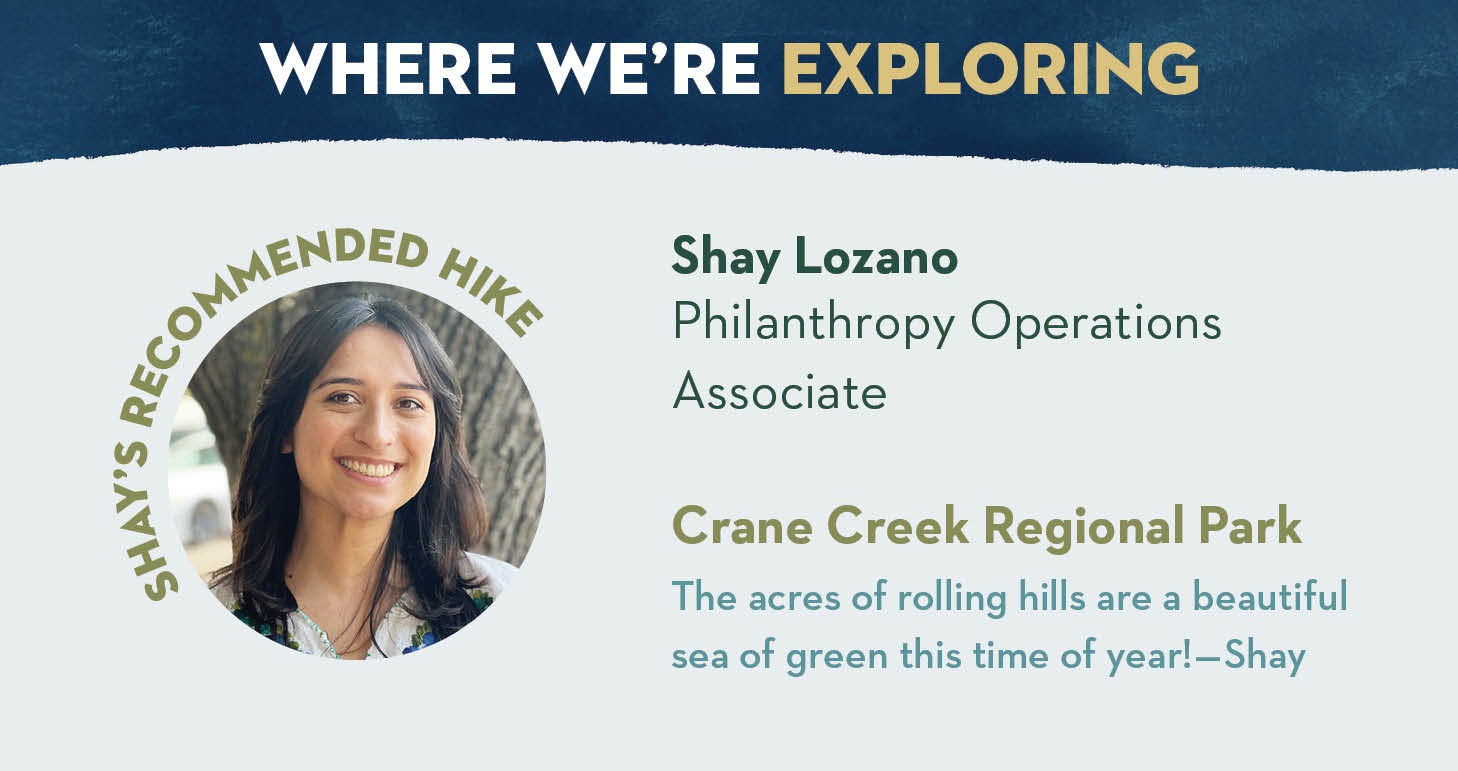
East of Rohnert Park, Crane Creek features 3.5 miles of hiking trails through meadows and oak woodlands, with sweeping views of the countryside, and wildflowers in spring.
